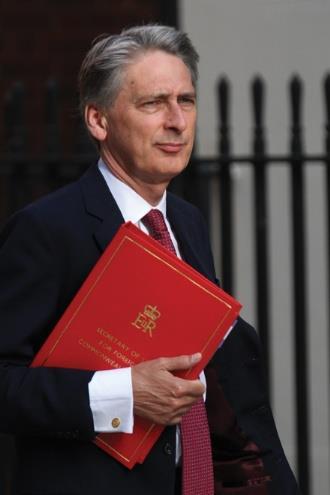The media portrayal of PFI projects may be of contractors pocketing fat profits at the expense of the public purse, but in reality the risk of taking on work is rising, profits are falling and the pipeline of promised projects has yet to materialise. Is the fate of the funding mechanism up in the air?

Those working on PFI schemes - or PF2, as it was rebranded in 2012 - are used to their projects being a political punchbag. While the Conservative Party dreamed up the funding mechanism in 1991, and New Labour turbocharged it to fund a new generation of schools and hospitals after their 1997 victory, media and politicians from all parts of the political spectrum now happily line up to give it a kicking.
Alongside accusations of contractorsÔÇÖ superprofits from PFI have come reports of ┬ú300 charges for changing a lightbulb, horror at the interest payments for PFI buildings and huge concern over the ┬ú10.5bn annual cost of PFI payments on a cash-strapped public sector. It was inevitable then that last yearÔÇÖs revelation over construction failures at a host of Scottish PFI schools led to calls for the financing mechanism to be scrapped - despite the fact an independent inquiry didnÔÇÖt find PFI was the reason for the failure.
Politically itÔÇÖs very sensitive; the public donÔÇÖt like the model - thereÔÇÖs an antipathy to PFI
Stuart Burr, Pinsent Masons
But if public outrage at PFI has become expected, revelations in recent months over how these public-private deals are working out for contractors themselves are perhaps much more surprising. Following on from the disclosure that contractor Laing OÔÇÖRourke was writing off ┬ú93m related to a Canadian hospital PFI scheme, came the news that Carillion was taking a ┬ú375m hit in its UK business, which it said was primarily related to three (unnamed) PFI contracts.
And while many in the industry are still disappointed that the pipeline of PF2 projects promised by chancellor Philip Hammond last November has not yet emerged (see box ÔÇťSo whereÔÇÖs the pipeline?ÔÇŁ), there is also evidence of a change in the industryÔÇÖs attitude to it. Increasingly, the opinion in the industry is that rather than the fabled gravy train of popular perception, the public sectorÔÇÖs fear of being taken for a ride has put such pressure on PF2 deals that contractors are concluding it is not worth the trouble.
PFI - What is it?
PFI and its successors - PF2 in England and Wales and NPD in Scotland - are deals in which the private sector funds up front the cost of designing, building and operating new public buildings, with the costs paid back over time - commonly 30 years - via an annual unitary charge. Critics say it doesnÔÇÖt offer value for money because the private consortiums delivering PFI projects borrow money at a much higher rate than the public sector, and take large profits in return for their risk. Defenders say it enables the public sector to pay for infrastructure without incurring additional borrowing.

Fat margins
It is not hard to see why accusations of contractor profiteering on PFI projects were made. When the financing was first used, contractors priced in margins fat enough to make them comfortable with the novelty of the system and the risks attached to operational performance over 30 years.
This was not surprising, given that construction contracts sitting under PFI vehicles commonly include heavy penalties for delays to the programme. Stuart Burr, partner in the projects group at law firm Pinsent Masons, says these can add up to millions of pounds a month in the largest schemes, and mean a large degree of risk transfer to the contractor.
Mike Peasland, former UK chief executive of Balfour Beatty Construction Services, says: ÔÇťLike any new contract style, people are a bit nervous at first and put in bigger margins. Commonly, contractors would make a 15% margin and then add a risk premium on top, meaning total return could be 20%.ÔÇŁ
However, the way deals were structured also meant problems were much less likely than on traditional contracts. Alastair Stewart, analyst at Stockdale Securities, says: ÔÇťStandard PFI new-build is simply not meant to go wrong. Everything should be designed to the nth degree in the preferred bidder stage with back-to-back fixed price supply chain agreements.ÔÇŁ
Mark Baxter, managing director of investments at contractor Galliford Try, says: ÔÇťThe perception at first was of the big bad contractor walking off with a sack-load of money, pricing in risks that didnÔÇÖt manifest themselves.ÔÇŁ
Pinsent MasonsÔÇÖ Burr says this has fed into its political unpopularity. ÔÇťThereÔÇÖs a general view of concern about complex projects taking ages to come through. Politically itÔÇÖs very sensitive; the public donÔÇÖt like the model - thereÔÇÖs an antipathy to PFI.ÔÇŁ From the height of PFI use in the early 2000s, when more than 60 deals were being signed every year, just six PF2 schemes have been signed since the revamp was launched in 2012.
But they remained popular with the industry. With builders both contracted by the special purpose vehicles set up to deliver these projects and being an investor in them, they got a double benefit when lucrative building contracts delivered buildings that became solid investments yielding good returns. Hence in the summer of 2014, when contracting giant Balfour Beatty was in the depths of financial woes brought on by dozens of failing contracts, it was largely the £1bn value of its portfolio of operational PPP projects that enabled it to keep the wolf from the door, giving it the balance sheet strength to absorb repeated profit warnings cumulatively worth hundreds of millions of pounds.
But fast forward three years and the situation is flipped on its head. Carillion - ironically the firm trying to buy Balfour back in 2014 - is now in trouble, in large part because of problems on three PPP contracts responsible for more than half of last monthÔÇÖs ┬ú375m UK writedown.

Heavy penalties
So how has this happened? Peasland says: ÔÇťAs the market matured then naturally it became more commoditised as contractors got more comfortable. The government side also got more attuned to the wrinkles in the contracts.ÔÇŁ As a result, he says, margins are down to more like 7% including risk - which leaves little room for error if problems arise. But rather than just correcting earlier high profits, Burr says there has been a ÔÇťrace to the bottomÔÇŁ in terms of pricing.
Galliford TryÔÇÖs Baxter says: ÔÇťThe pendulum has swung too far away from the contractor. These recent jobs have obviously got too much risk in them. While the man in the street thinks the private sector has the government over a barrel on PF2, the reality is now the other way round.ÔÇŁ
However, the new contract form following the coalition governmentÔÇÖs revamp of PFI in 2012 is not seen as responsible for the problem. Mark Elsey, partner at law firm Ashurst, says the wider issue has been primarily commercial: ÔÇťThere has been some very aggressive construction pricing with resultant financial hits for some of those companies. And we can see that those who say there is no risk transfer in PFI are clearly wrong.ÔÇŁ
Of the three projects widely suspected as being behind CarillionÔÇÖs recent woes, only one - the ┬ú430m Midland Metropolitan hospital scheme - is a PF2 deal, with one other being a Scottish roads PPP and one other - the ┬ú335m Royal Liverpool hospital - being a classic PFI project.

So whereÔÇÖs the pipeline?
Since the 2012 revamp, which saw the replacement of PFI with PF2 in England and Wales, only six PF2 projects have been signed: five batches of the Priority School ║├╔ź¤╚╔˙TV Programme, and the Midland Metropolitan Hospital. Together, they have a capital value of ┬ú1bn.
In his Autumn Statement last year, chancellor Philip Hammond promised to develop a pipeline of PF2 projects to be published in ÔÇťearly 2017ÔÇŁ. The industry was briefed to expect PF2 to be used to fund hospitals, schools, prisons and Ministry of Defence estate redevelopment, plus a few other large projects, and that it would update the PF2 standard contract set (called SoPC - standardisation of PF2 contracts).
However, while the ┬ú6bn Lower Thames Crossing and the ┬ú1.4bn A303 Stonehenge tunnel are progressing, no pipeline has been published and the only other sign of progress has been publication by Calderdale and Huddersfield NHS Foundation Trust of a business case for a ┬ú300m PF2 transformation of its estate. KPMGÔÇÖs Richard Threlfall concedes that while expectations of a much bigger pipeline may have been ÔÇťoverstatedÔÇŁ, the government has ÔÇťnow stopped talking about publishing a pipeline full stopÔÇŁ.
Instead, PF2 schemes are thought to be likely to come forward on a much more piecemeal basis. AshurstÔÇÖs Mark Elsey says this is despite the fact the Treasury itself is in favour, as evidenced by HammondÔÇÖs original announcement. ÔÇťThe Treasury doesnÔÇÖt wield the same influence as it did, and it has faced kicks from government departments who say PF2 is too complex and lengthy to procure and too politically toxic, and that the public sector can borrow more cheaply anyway,ÔÇŁ he says.
Clyde & CoÔÇÖs Meakin says: ÔÇťIt is driven on a department by department basis now. Given a choice, most departments would seemingly rather have their projects centrally funded than have to engage with lots of bankers and investors.ÔÇŁ
However, despite this, the Treasury is understood to be pushing ahead with its plan to update the SoPC. Pinsent MasonÔÇÖs Burr says the Treasury has a draft of the new standard contracts, which is being reviewed by external lawyers prior to consultation.
[The Treasury] has faced kicks from government departments who say PF2 is too complex and lengthy to procure and too politically toxic
Mark Elsey, Ashurst
A spokesperson for the Treasury declined to answer whether the government still expected to publish a pipeline of PFI projects. However, he said PF2 remained the governmentÔÇÖs ÔÇťpreferred model of public-private partnershipÔÇŁ, as it was value for money and reduced procurement times.
ÔÇťThe government is committed to increasing spending on infrastructure, including the use of private finance where appropriate,ÔÇŁ he said.

Risky business
Nevertheless, those pushing for a more collaborative industry where contractors and clients work in partnership see a contradiction with the degree of risk transfer expected under PF2. While PFI is ostensibly a form of public-private partnership, this partnership occurs primarily between the ultimate client and the special purpose vehicle (SPV) set up to deliver the scheme. The relationship between the SPV and the contractor is not so cosy. ÔÇťThereÔÇÖs collaboration around the SPV,ÔÇŁ says Burr, ÔÇťbut the contractual risk position is very old-school.ÔÇŁ Baxter says: ÔÇťAt the moment, the partnership bit is missing from some PPPs. They just want a price and if itÔÇÖs not realistic, itÔÇÖs not their problem.ÔÇŁ
Richard Threlfall, head of infrastructure and construction at KPMG, says: ÔÇťCreating a bidding war on price for contracts where you have to give an absolutely fixed price over a 30-year period puts enormous pressure on the construction side, and is what sows the seeds of destruction. It is set up to create maximum financial exposure to the contractor at the thinnest possible margin.ÔÇŁ
And any assumption that being equity holders in the PFI special purpose vehicle might insulate contractors from losses has not proved correct. ÔÇťQuite often the equity-holding contractor has been pushed to take more of the pain than other subcontractors,ÔÇŁ says Burr.
In addition to these concerns, there is also the spectre of the ultimate public clients to PFI contracts attempting to use contractual conditions, in an age of public spending austerity, to reduce their payments, and even force PFI vehicles back to the negotiating table long after deals have been concluded. This hits the value of the projects once construction has been completed.
Meanwhile, other potential bidders for PFI work are concerned that the strictures of the PF2 model - which works best to deliver programmes of projects such as schools, hospitals or prisons that are well-understood and have replicable elements - are not suited for the huge one-off schemes that have recently come forward: a tunnel under Stonehenge, and two new crossings under the River Thames. AshurstÔÇÖs Elsey says: ÔÇťPF2 is quite a purist model - itÔÇÖs not suitable for all clients and projects. You may need something more flexible depending on the particular challenge youÔÇÖre facing.ÔÇŁ

The final challenge is that, with a lack of a significant pipeline or prospect of one, many firms have shed their PFI expertise. Robert Meakin, partner in the projects and construction group at law firm Clyde & Co, says: ÔÇťPeople have retired or moved. You canÔÇÖt keep highly skilled and expensive people hanging around, given the hiatus.ÔÇŁ This makes it less likely firms will bid.
Baxter says Galliford is ÔÇťone of the fewÔÇŁ to have held on to a reasonable-sized team by finding other things for people with PFI knowledge to do. But others have not. ÔÇťAs a company weÔÇÖd very rarely bid on a project if we didnÔÇÖt have an expert in-house,ÔÇŁ he says.
All of this adds up to a much less attractive prospect than the lucrative PFI contracts of old. Carillion, which has taken forward two of the six PF2 deals signed, has now announced it is withdrawing from bidding for PFI projects. And while GallifordÔÇÖs Baxter says he would be interested in bidding on any forthcoming pipeline of school or prison projects, he has not bid for the A303 PFI tunnel under Stonehenge or the Silvertown tunnel under the Thames. ÔÇťThe risks in construction and bid costs for PFI make it internally quite a hard sell to go for. ItÔÇÖs certainly going to make some less keen. The marketÔÇÖs saying it still has appetite - but only at the right level of risk,ÔÇŁ he says.
He is not alone in thinking that. Burr says: ÔÇťThereÔÇÖs a real sense that people are saying the risks arenÔÇÖt commensurate with the rewards. Some massive PFI schemes are potentially group-threatening if they fail. You always get some companies who are more bullish, but across the piece I wouldnÔÇÖt be surprised if a number of contractors are changing tack.ÔÇŁ
Despite all these challenges from both the public and private sides of the equation, there are still many who are worried about what seems to be the slow death of a model that has funded more than 700 projects worth nearly ┬ú60bn since the 1990s. Elsey says the market will still bid for properly structured deals. ÔÇťThereÔÇÖs no alternative to private sector finance if we want a serious programme of infrastructure investment in this country,ÔÇŁ he says. ÔÇťThe UK canÔÇÖt afford this current round of projects to be the last throw of the dice.ÔÇŁ



























No comments yet